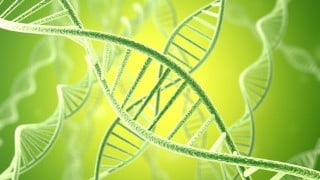Biology – Molecular Basis of Inheritance
Learn about nucleic acids, DNA, RNA, genetic code, transcription, translation, and gene expression in this biology course. Suitable for beginners, NEET, MHT-CET, and board exam preparation. Explore topics like DNA fingerprinting and the Human Genome Project. Perfect for biology enthusiasts.
What you’ll learn
- The DNA
- The Search for Genetic Material
- RNA World
- Replication
- Transcription
- Genetic Code
- Translation
- Regulation of Gene Expression
- Human Genome Project
- DNA Fingerprinting
SUMMARY
Nucleic acids are long polymers of nucleotides. While DNA stores genetic information, RNA mostly helps in transfer and expression of information. Though DNA and RNA both function as genetic material, but DNA being chemically and structurally more stable is a better genetic material. However, RNA is the first to evolve and DNA was derived from RNA. The hallmark of the double stranded helical structure of DNA is the hydrogen bonding between the bases from opposite strands. The rule is that Adenine pairs with Thymine through two H-bonds, and Guanine with Cytosine through three H-bonds. This makes one strand complementary to the other. The DNA replicates semiconservatively, the process is guided by the complementary H-bonding. A segment of DNA that codes for RNA may in a simplistic term can be referred as gene. During transcription also, one of the strands of DNA acts a template to direct the synthesis of complementary RNA. In bacteria, the transcribed mRNA is functional, hence can directly be translated. In eukaryotes, the gene is split. The coding sequences, exons, are interrupted by non-coding sequences, introns. Introns are removed and exons are joined to produce functional RNA by splicing. The messenger RNA contains the base sequences that are read in a combination of three (to make triplet genetic code) to code for an amino acid. The genetic code is read again on the principle of complementarity by tRNA that acts as an adapter molecule. There are specific tRNAs for every amino acid. The tRNA binds to specific amino acid at one end and pairs through H-bonding with codes on mRNA through its anticodons. The site of translation (protein synthesis) is ribosomes, which bind to mRNA and provide platform for joining of amino acids. One of the rRNA acts as a catalyst for peptide bond formation, which is an example of RNA enzyme (ribozyme). Translation is a process that has evolved around RNA, indicating that life began around RNA. Since, transcription and translation are energetically very expensive processes, these have to be tightly regulated. Regulation of transcription is the primary step for regulation of gene expression. In bacteria, more than one gene is arranged together and regulated in units called as operons. Lac operon is the prototype operon in bacteria, which codes for genes responsible for metabolism of lactose. The operon is regulated by the amount of lactose in the medium where the bacteria are grown. Therefore, this regulation can also be viewed as regulation of enzyme synthesis by its substrate.
Human genome project was a mega project that aimed to sequence every base in human genome. This project has yielded much new information. Many new areas and avenues have opened up as a consequence of the project. DNA Fingerprinting is a technique to find out variations in individuals of a population at DNA level. It works on the principle of polymorphism in DNA sequences. It has immense applications in the field of forensic science, genetic biodiversity and evolutionary biology.
EXERCISES
1 Group the following as nitrogenous bases and nucleosides: Adenine, Cytidine, Thymine, Guanosine, Uracil and Cytosine.
2. If a double stranded DNA has 20 per cent of cytosine, calculate the per cent of adenine in the DNA.
3. If the sequence of one strand of DNA is written as follows: 5′ -ATGCATGCATGCATGCATGCATGCATGC-3′ Write down the sequence of complementary strand in 5’→3′ direction.
4. If the sequence of the coding strand in a transcription unit is written as follows: 5′ -ATGCATGCATGCATGCATGCATGCATGC-3′ Write down the sequence of mRNA.
5. Which property of DNA double helix led Watson and Crick to hypothesise semi-conservative mode of DNA replication? Explain.
6. Depending upon the chemical nature of the template (DNA or RNA) and the nature of nucleic acids synthesised from it (DNA or RNA), list the types of nucleic acid polymerases.
7. How did Hershey and Chase differentiate between DNA and protein in their experiment while proving that DNA is the genetic material?
8. Differentiate between the followings: (a) Repetitive DNA and Satellite DNA (b) mRNA and tRNA (c) Template strand and Coding strand
9. List two essential roles of ribosome during translation.
10. In the medium where E. coli was growing, lactose was added, which induced the lac operon. Then, why does lac operon shut down some time after addition of lactose in the medium?
11. Explain (in one or two lines) the function of the followings: (a) Promoter (b) tRNA (c) Exons
12. Why is the Human Genome project called a mega project?
13. What is DNA fingerprinting? Mention its application.
14. Briefly describe the following: (a) Transcription (b) Polymorphism (c) Translation (d) Bioinformatics
Who this course is for:
- Biology enthusiast.
- Beginners in Biology.
- NEET & MHT-CET aspirants
- Those preparing for board and competitive exams State Board, CBSE, ICSE , IGCSE, MHT-CET & NEET
User Reviews
Be the first to review “Biology – Molecular Basis of Inheritance”
You must be logged in to post a review.







There are no reviews yet.